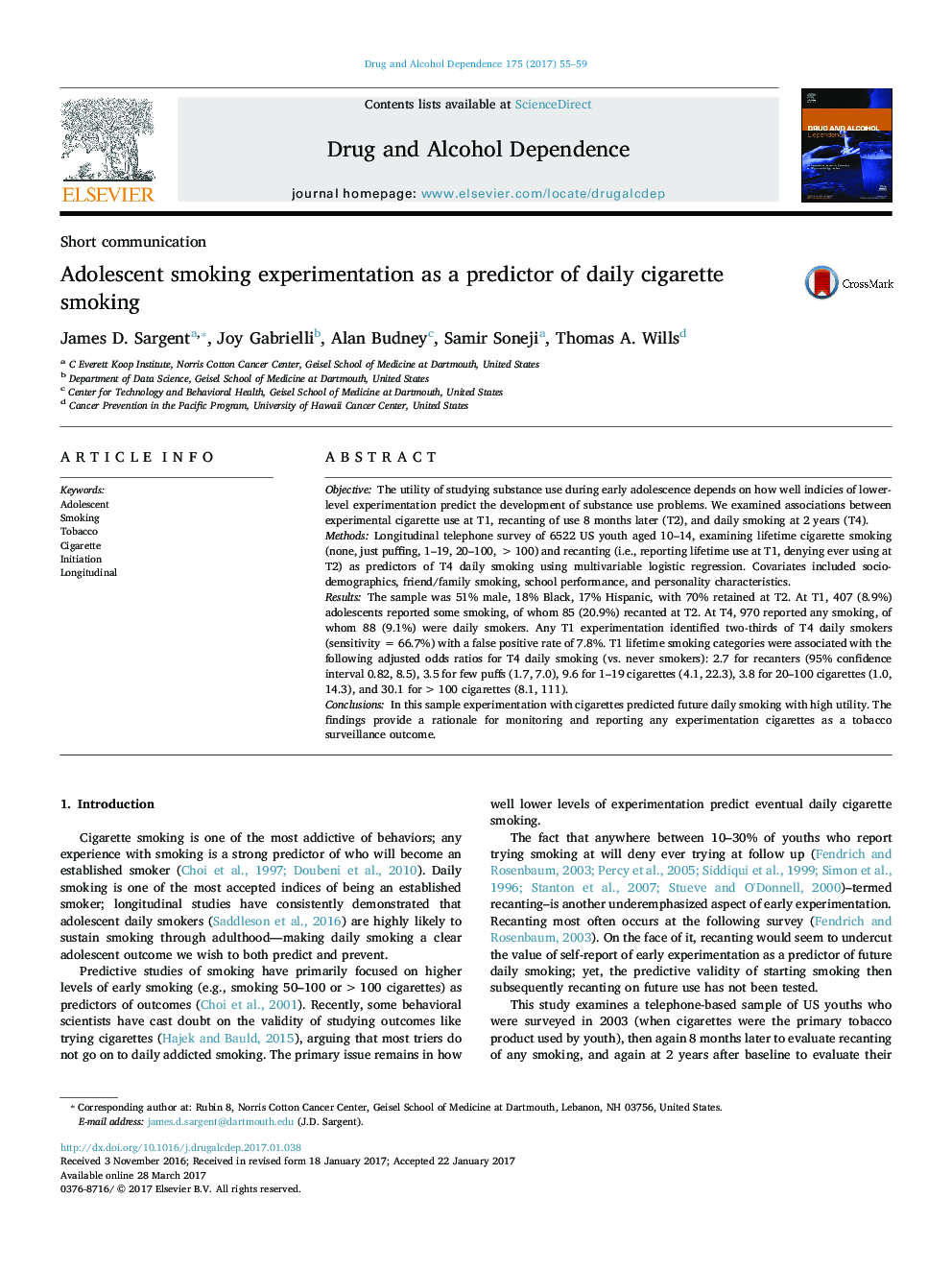| کد مقاله | کد نشریه | سال انتشار | مقاله انگلیسی | نسخه تمام متن |
|---|---|---|---|---|
| 5120093 | 1486116 | 2017 | 5 صفحه PDF | دانلود رایگان |
- The utility of smoking research in youth rests on early predictors of later smoking behavior.
- Trying smoking in early adolescence identified two-thirds of later daily smokers (sensitivity 66.6%).
- Trying smoking had a false positive rate of only 7.8% (specificity of 92.2%).
- All levels of T1 lifetime smoking increased risk of daily smoking 2 years later.
ObjectiveThe utility of studying substance use during early adolescence depends on how well indicies of lower-level experimentation predict the development of substance use problems. We examined associations between experimental cigarette use at T1, recanting of use 8 months later (T2), and daily smoking at 2 years (T4).MethodsLongitudinal telephone survey of 6522 US youth aged 10-14, examining lifetime cigarette smoking (none, just puffing, 1-19, 20-100,â>100) and recanting (i.e., reporting lifetime use at T1, denying ever using at T2) as predictors of T4 daily smoking using multivariable logistic regression. Covariates included sociodemographics, friend/family smoking, school performance, and personality characteristics.ResultsThe sample was 51% male, 18% Black, 17% Hispanic, with 70% retained at T2. At T1, 407 (8.9%) adolescents reported some smoking, of whom 85 (20.9%) recanted at T2. At T4, 970 reported any smoking, of whom 88 (9.1%) were daily smokers. Any T1 experimentation identified two-thirds of T4 daily smokers (sensitivity = 66.7%) with a false positive rate of 7.8%. T1 lifetime smoking categories were associated with the following adjusted odds ratios for T4 daily smoking (vs. never smokers): 2.7 for recanters (95% confidence interval 0.82, 8.5), 3.5 for few puffs (1.7, 7.0), 9.6 for 1-19 cigarettes (4.1, 22.3), 3.8 for 20-100 cigarettes (1.0, 14.3), and 30.1 for >100 cigarettes (8.1, 111).ConclusionsIn this sample experimentation with cigarettes predicted future daily smoking with high utility. The findings provide a rationale for monitoring and reporting any experimentation cigarettes as a tobacco surveillance outcome.
Journal: Drug and Alcohol Dependence - Volume 175, 1 June 2017, Pages 55-59
